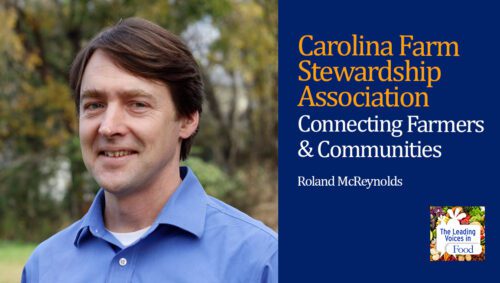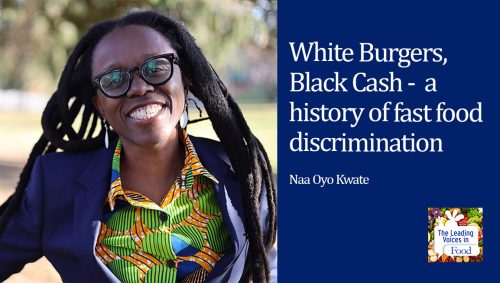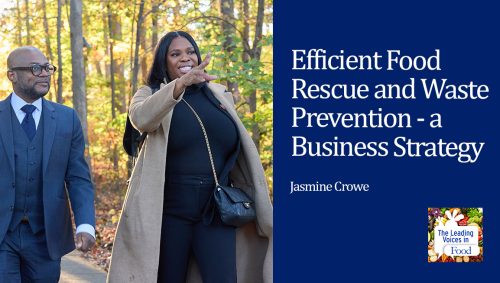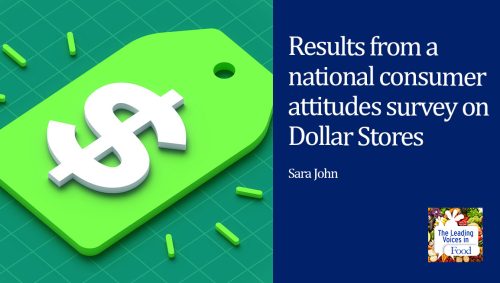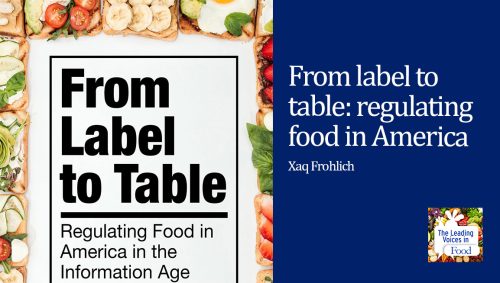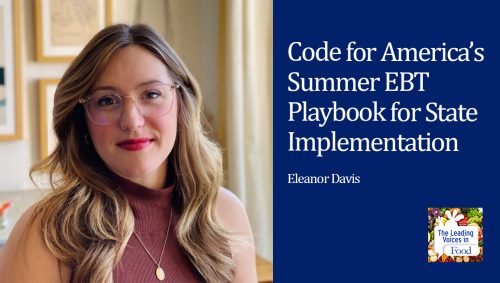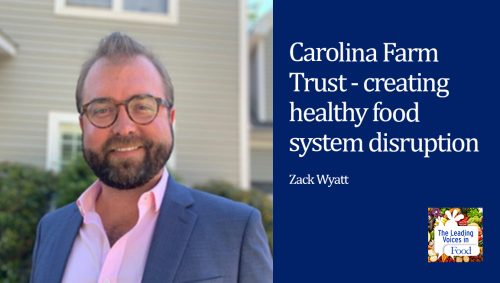The Leading Voices in Food
E79: Andy Fisher on Exploring the Connection Between Industry and Food Banks
This podcast is part of a series focused on the impact of the COVID-19 pandemic. The pandemic is exposing a deep flaw in the country’s food system, namely stunning levels of food insecurity, but also the transformation of emergency food assistance into what some have characterized as an industry as food charity become big business. Andy Fisher, our guest today is a leader in the Food Security and Food Justice Movement. He founded and led The National Community Food Security Coalition and led Federal Legislation campaigns to gain more than $200 million for community-based food security and farm to school projects.
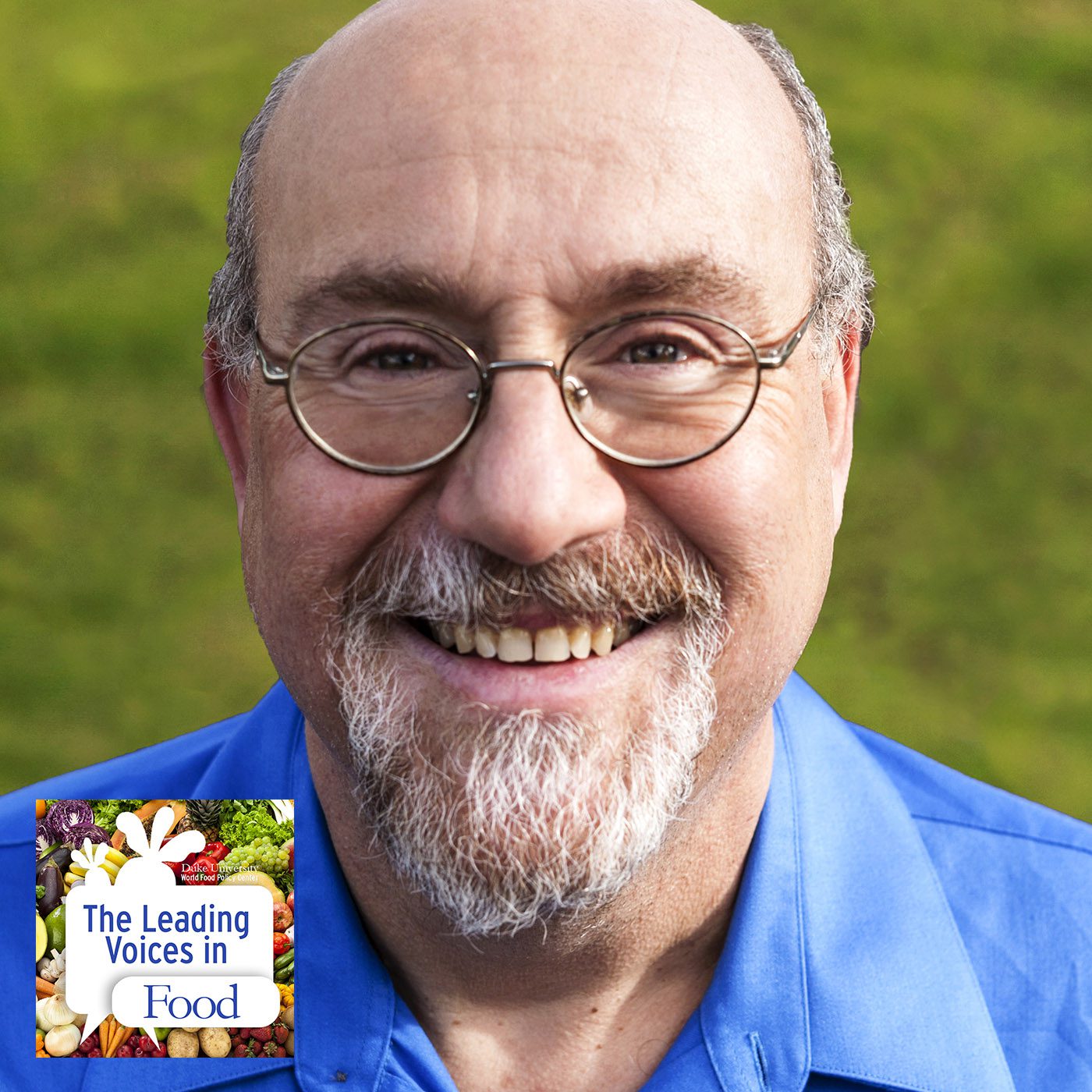
Andy Fisher has been a leading force in the food security and food justice movement for the past 25 years, starting and leading the main national alliance on food systems, the Community Food Security Coalition until 2011. He led campaigns to gain passage of federal legislation that has brought over $200 million to community groups nationwide for food security and farm to school projects. In 2017, he authored an expose of the hunger industrial complex, “Big Hunger: The Unholy Alliance Between Corporate America and Anti-Hunger Groups.” He currently is executive director at the Ecological Farming Association in Santa Cruz, CA
Interview Summary
So Andy, you wrote a book with a very provocative title, “Big Hunger: The Unholy Alliance between Corporate America and Anthony Anti-Hunger Groups.” What are you hoping people take away from the work that you did on this book?
Sure, so the book was both an expose and a vision. It was expose of those relationships between mainly the food industry, but a little bit broader than that and anti-hunger groups especially food banks. So exposing what I call the hunger industrial complex or those connections that keep us in a place of maintaining hunger rather than solving hunger. And it presents a vision of how to do things differently and identifies a number of examples and models of projects that are engaged in public health advocacy, have a public health perspective that foster economic democracy, and that also support economic justice or support kind of addressing the root causes of hunger and addressing poverty and racism in the light.
So Andy, when you look at the anti-hunger groups, food banks and other such organizations, what most people see is a well-meaning group of people trying to provide food for people who are in desperate need of it. And I think what you’re saying is that there’s kind of a complicated picture back behind the curtain and once one open, so you see some things you wouldn’t know otherwise. Tell us what you see back there.
The first thing I want to say is that folks who are working in emergency food system, they’re all good people. They’re good people who are trapped in a bad system. That system has been going on since more or less the early 1980s. And it’s a system that nobody expected to continue until 2020 and to thrive and grow. I think extent it has. I mean, before the pandemic hit, emergency food system and network of charities have a 200 food banks and 60,000 food pantries and soup kitchens where people get access to food, we’re serving over 40 million people with about $5 billion worth of food. So it’s grown exponentially, it’s institutionalized, it’s industrialized, but it hasn’t solved the problem. If you look at food security data that the USDA has been collecting since 1995, back then 12% of the population was considered to be food insecure, which meant that they had issues or concerns or experiences which meant that they couldn’t feed their families or feed themselves. If you look at 2018 data, you’ll find that we have almost exactly the same percentage of people who are food insecure, 11.8%. So the numbers go up, the numbers go down. As a nation, we’ve been treading water for the past 25 years or so on this issue and even longer. Food banks aren’t solving the problem. They’re in many ways institutions of community caring, but they’re also have their collateral damage and they also have their issues that hold us back from solving the problem at its root causes rather than just putting a bandaid onto it.
How does corporate interest figure into this picture?
In many ways, food banks are a downstream appendage of the food industry. And by that, I mean that most of the food that is coming into the food bank industry, so it’s post-retail, it’s post-processing. For a lot of folks that make sense, that idea of not throwing food into the garbage is a great thing. But if you look at the quality of some of that food, it’s certainly pretty atrocious. It’s getting better, but there’s still a lot of junk in the system. But in general, there are more early preferable ways for industry to get this food out. One good way of looking at this system is through Walmart. Walmart is the nation’s largest retailer. Walmart has committed to donating over $2 billion worth of food and cash to the emergency food system. And it’s more than met those goals over a five year period, but it’s doing so in a way that benefits its bottom line. It’s paying its workers sub-living wages, encouraging them to go to food banks, encouraging them to get onto the SNAP program as a way to make ends meet. And then it’s donating money to food banks and to anti-hunger groups to do SNAP outreach and to support their programs. But it turns out that it’s also the single largest redeemer of food stamps in the country. One out of every five or one out of every six food stamp dollars goes into the coffers of Walmart. So it’s double dipping and triple dipping, but it’s also so using that philanthropy, that charity as a way to build it’s reputation as a hunger fighter, rather than a hunger causer. So it uses that strategically to help it build its access into desserts markets. Walmart has a few dozen of it. Executives are on the boards of the 200 food banks around the country and they along with other industry players are instrumental in keeping the food bank industry in a very politically neutral place where they do not advocate for higher minimum wage or do not advocate for affordable housing or universal healthcare. All of those issues that are essentially causing people to show up at their door.
So how sizeable is the amount of money in food given to food banks coming from industry? Do they pretty much rely on these sort of contributions to exist?
It’s less cash than it is food. I don’t know the exact percentages because it varies food bank by food bank, but roughly 70 to 80% of food in the food banking system is coming from private sector. About 20% comes from the government. Increasingly food banks are buying more food and they’re buying more food from farmers and buying healthier food. But corporations are at the center of where the food is coming from because they’re at the center of the food system in our country.
So I’d like to come back at the end and ask you about equity issues in particular. And you alluded to some of these in your remarks before. Let me ask this question. So there has been much attention in recent months to mass amounts of food waste and the diversion of some of what might’ve been food waste into food charities. What does this say about our food system in Europe?
Well, I mean, I think what’s happening now with the pandemic is with the closures of restaurants and of colleges and schools, we have a bifurcated food system, one of which is serving retail institutions and one of which is serving food service. That food service sector obviously closed down in the spring because all those institutions closed down the market. Their markets went dry. So you saw a lot of waste. You saw, there’s zucchini is rotting in the field. You saw pigs that were not able to get processed through the slaughter houses. You saw milk being dumb, things like that. So people’s natural inclination is not to want that food to go to waste. They want to go to people who are gonna eat it, which has its very positive community-oriented implications as well. Prior to the pandemic in the past few years, USDA committed about $5 billion worth of what they call tariff mitigation foods. They bought an extra $5 billion worth of food from farmers and donated it through the emergency food system as a way to kind of shore up farm prices in a way to support those farmers who are hurt by the tariffs that the Trump administration put on China and China’s retaliation.
So you have that system and now you’re seeing about another $4 billion worth of food that the government is buying to support that industry. So you’re seeing that essentially nutrition policy is downstream to agricultural policy. And this is just one example of a long history that goes back to the 1930s when the food stamp program was created to bolster farm beef prices. The food industry has been instrumental to the maintenance and the growth of Federal Nutrition Programs since the 1930s and the food banks are just one aspect of that. In some ways it’s been couched as an alternative to the SNAP program but it’s very much tied into farm surplus in our country.
So Andy, with an estimated 40 million people recently unemployed, there have been pictures of miles long line except food banks, doesn’t this mean that the emergency food system is more needed than ever and that we’re well-positioned to address people’s needs?
On one level it does, and one level it’s become the safety net under the safety net. So I think you have to rewind a little bit to February before the pandemic really took hold. Many food banks were operating near capacity even though we are in an economic boom, they were still serving 40 million people. They was pumping $5 billion worth of food. They were still filling their warehouses and getting them out. And you saw generally a growth model within the food banking industry where they measure their success and the number of pounds that are distributed. And it’s a very easy and intangible way to measure what you’re doing. This year we wanna put out 5% more poundage than we did last year and we’re more successful and we’re doing our job because of that.
So we were at this high point anyway, we weren’t starting from zero. Food banks are starting from 80, 90% of capacity, whatever it might be at an individual level. And when the pandemic hit and 40 million people became unemployed overnight, essentially you saw huge pressure on this food banks to distribute the food, but you also saw that because the administration has been very reluctant to increase the SNAP program, there’s been a lot of pressure put on them to increase SNAP benefits by 15%. And they’re very reluctant to do that because there’s a reluctance to kind of buy into that entitlement mentality, that entitlement type of program that is, more of a rights-based program than a charity program as food banks are.
So the food banks have become the last resort as the government abdicates its responsibility to the public, to the poor, can make sure that food is a human right, in a sense, and tells them to go to the food bank and supplies those food banks with more and more food. You see strengthening of policy away from an entitlement program towards the charity program. That’s really a public private partnership. That’s been alternative way for the government to support nutrition programs, but much more cheaply and much less in a justice-based framework and the core USDA nutrition programs.
What positive changes do you see in the food bank world? And are there ways to accelerate those changes?
Food bank world is really changing in a very positive fashion. There are many food banks who are doing some excellent work around community development around food systems, around supporting farm to school, about supporting job training. Some are advocating for minimum wage. For example, in Rochester, New York Foodlink is doing some great work around building a community economic development model of buying local food and using it to cater school meals and to support community gardens.
There’s a growing network called Closing the Hunger Gap based out of a group called Why Hunger in New York city. That’s a network of four or 500 individuals in groups that are identifying how to accelerate that change and how to make that change more mainstream.
Places like England and Scotland, for example, have a poverty truth commission where they’re mentoring, especially women who have lived experience of hunger and poverty and helping them to train politicians to break down those myths about poverty, where they’re actively trying to reduce reliance on food banks in that country. A group in Toronto and Ontario called Freedom 90 has been organizing volunteers at food pantries to make claims on the provincial government to increase social assistance programs.
So there’s lots and lots of great examples all around the country. It’s a growing movement, really of how to change, how we do food charity, it needs to be accelerated, it needs to be supported, needs to be made more of the norm than what we’re doing now.
Oh, it’ll be so interesting to see where this goes in the upcoming years. So let me ask one final question. How does the charitable food system impact racial equity?
In writing this book, I realized I had never volunteered at a food pantry before. So I was like, “I think I should do this.” So I called up my buddies at the Oregon Food Bank. They pointed me to what they thought was one of the best food pantries in Portland, where I live. And it’s a choice pantry, which means like half of the pantry is set up as a waiting room, the other half is set up as kind of like a grocery store with coolers and shelves. And you get to go in and shop basically, to choose what you want rather than get in box of food. And I get an orientation from this teenage girl who tells me in my role is to be across between the security guard to make sure that people don’t take too much because there’s rules on which you can take and then be somebody’s personal shopper and walk them through the system.
So I got it, I’m doing my shift. It’s a four-hour shift. I’m halfway through, I come up on my next set of clients and it’s an elderly, African-American couple who’s been waiting there for two hours and they’re looking tired and dejected. And I grab a shopping cart and talk to them a little bit and find out how many people in their household and start taking them down the aisle. And I start telling them what they can take, few cans of beans, a can of tuna, some pasta, whatever it is. And as they’re shopping, I realized I’m watching what they’re putting into their shopping cart. And I catch myself and try to give them some space, but I still find myself doing that because I find myself in this very uncomfortable position as a white middle class guy watching this elderly African-American couple, make sure they didn’t take an extra can of tuna.
I realized that there’s just this really uncomfortable power dynamics in that food pantry that were replicated time and time again during my volunteer stint. I think that’s endemic of the kind of the racial injustices within the system. Again, it’s not right-based, it’s charity-based. It tends to be kind of a white savior mentality. It’s really a system that’s based upon structural violence and that does nothing to address that structural violence. It does nothing to help people build wealth, to help people get out of the streets in which they’re in. I mean, some do, I shouldn’t be so extreme about that. But in general it is not helping people to address the needs that they have to get out of the system. It keeps them trapped in that mentality, in that modality.
Again, things are changing and things are not as black and white as I think I’m portraying. But I think what we’re seeing is that capitalism and racism are very much interconnected. And this is a system that they’re very much based upon putting a band-aid on that extraction of wealth from brown and black people and from American general and it does nothing to address that racial implications. But in many ways, like my example, it furthers those, it further deepens those relationships that are very uncomfortable.



